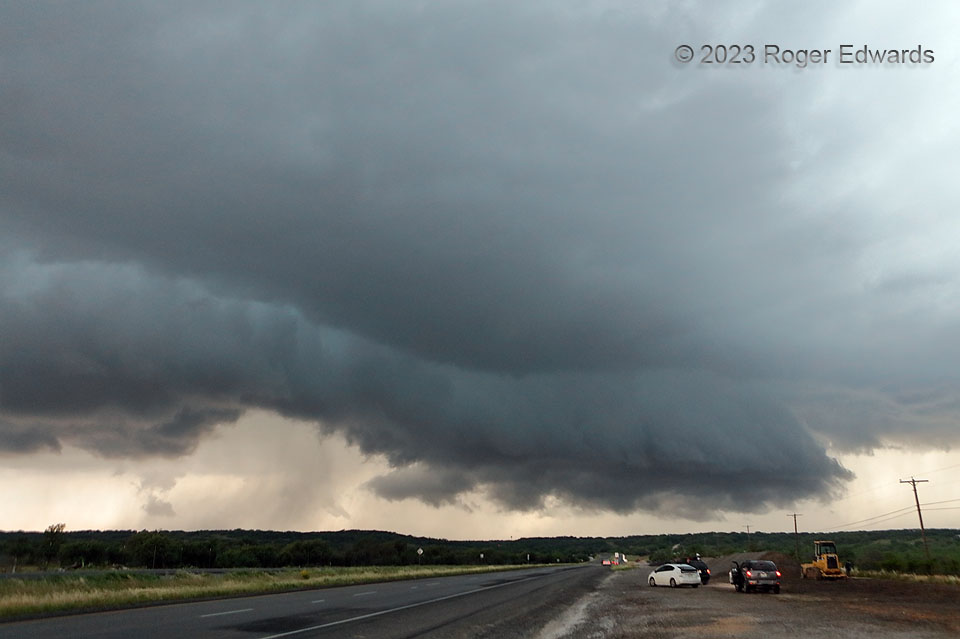“Outflow-dominant” isn’t a popular term anymore with respect to supercells, but I don’t care. I’m using it. This was one. That is why. A supercell can be outflow-dominant and still maintain an existence, albeit a tenuous one, as most such storms ultimately lose a direct vertical pipeline of surface-based inflow air and either shrivel, merge with nearby storms and expand upscale into a wind machine, or become elevated. What looks like an extensive shelf cloud mostly is, for the rear-flank gust front. The mesocyclonic edge, north (right) of the highway, was a brief wall cloud with weak to moderate cloud-base rotation, still rotating but also being undercut by cold air the inner part of the rear-flank downdraft known as the occlusion downdraft. Scud on the right side of the feature had raced up the cloud ramp from the vertical pressure-gradient forces of the low-level mesocyclone alone, but now was assisted by forced lift over the cold pool. What is left of the wall cloud linked with the shelf for a continuous cloud feature, even as the north side (close to the vault) was behaving as a hybrid of the two still. This storm would move over Brownwood, producing severe wind, hail and heavy rain, with the gust front slightly retreating in a storm-relative sense, the still somewhat outflow-undercut mesocyclone nearly producing a weak tornado, before gusting out altogether. A separate, third supercell of the day (for me) would form along the far part of the trailing gust front of this one at sunset, while I was searching for open fast food in a town beset by wailing storm sirens, but that storm got undercut quickly itself.
2 W Brownwood TX (6 May 23) Looking W
31.7212, -99.0202
